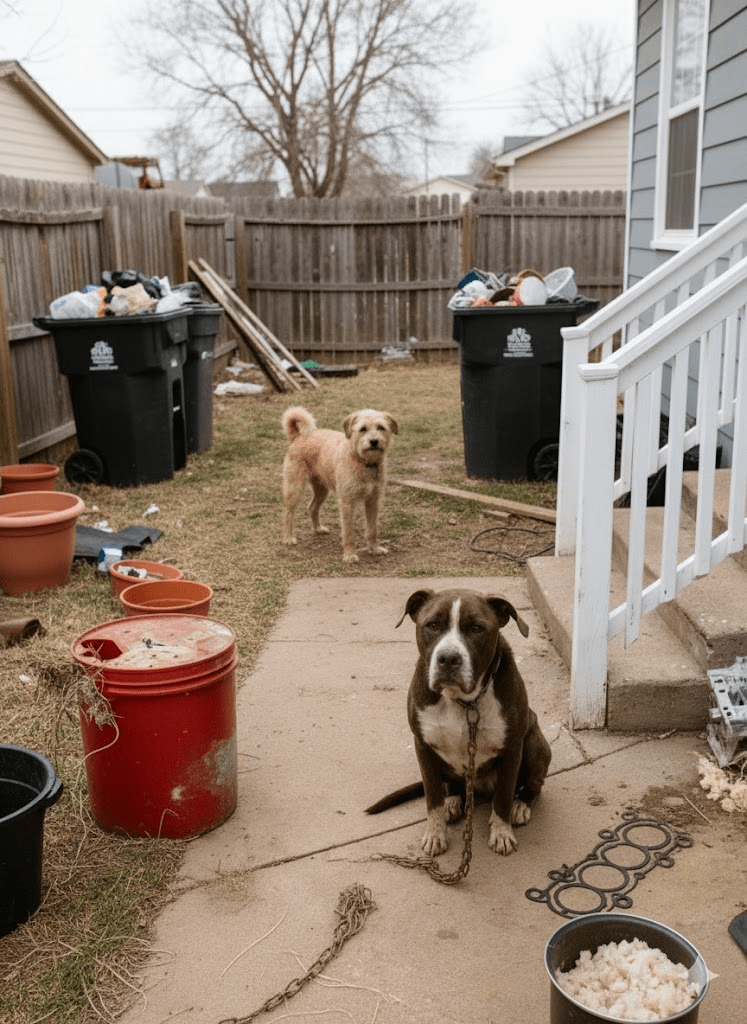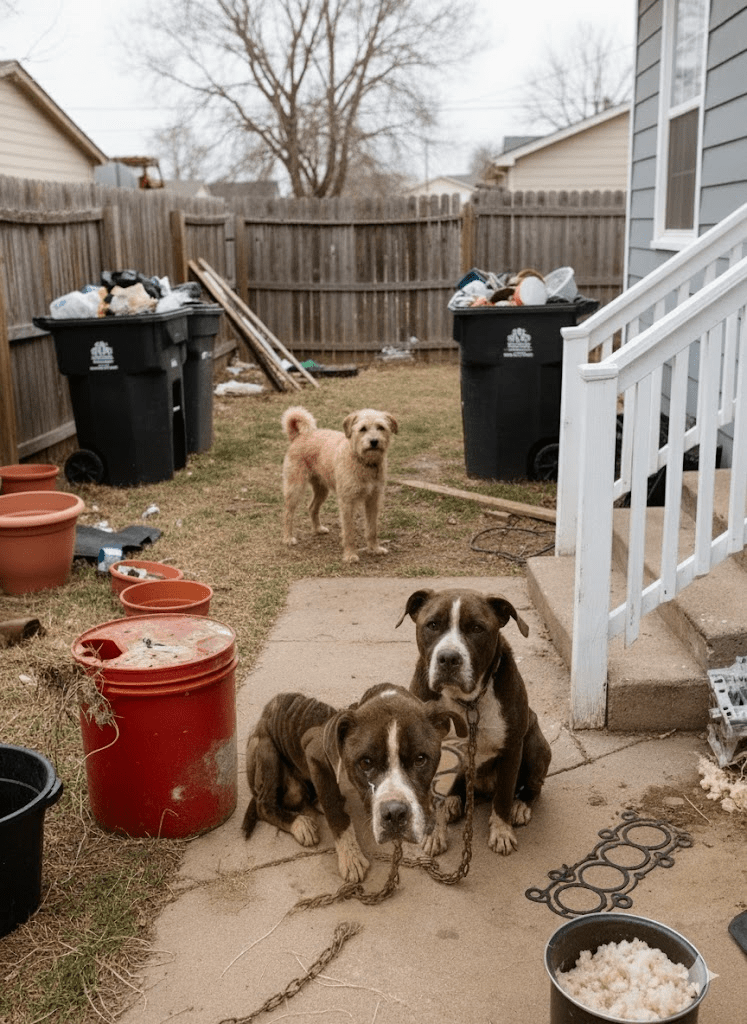The image before us tells a silent, poignant story, one that is far too common in communities across the globe. We see a dog, a creature inherently deserving of love, care, and a safe environment, chained in what appears to be a neglected outdoor space. Its posture, the visible chain, and the surrounding debris paint a picture of an existence devoid of the basic comforts and stimulation that every animal needs to thrive. The context of this single photograph extends far beyond its frame, inviting us to consider the broader issues of animal welfare, responsible pet ownership, and the critical role each of us plays in recognizing and addressing neglect. This dog, with its solemn gaze, serves as a powerful, unspoken plea, urging us to look closer, to understand deeper, and ultimately, to act with greater empathy and diligence. Its story, while heartbreaking, is an opportunity for reflection and a catalyst for change, prompting us to examine how such situations arise and what measures can be taken to prevent them, ensuring that no animal is left to suffer in silence.

The visible conditions surrounding this dog highlight the stark reality of inadequate care. The presence of what appears to be discarded machinery and general clutter, rather than a clean and designated living area, suggests a lack of attention to its immediate environment. While the dog has food in a bowl, the overall setting does not convey warmth, comfort, or safety. A healthy living space for a dog involves more than just sustenance; it requires shelter from the elements, a clean area for rest, and freedom from hazards. The absence of these fundamental provisions can have significant impacts on an animal’s physical health, leading to preventable illnesses, injuries, and chronic stress.

Beyond the physical environment, the act of chaining a dog for extended periods raises significant concerns about its mental and emotional well-being. Dogs are social animals that thrive on interaction, exercise, and mental stimulation. Confinement, especially on a chain, severely limits their ability to express natural behaviors like exploring, running, and playing. This restriction can lead to profound psychological distress, manifesting as anxiety, aggression, or deep depression. The dog’s somber expression and confined posture could very well be indicators of the emotional toll that such an existence takes, underscoring the cruelty inherent in depriving an animal of its fundamental needs for freedom and engagement.

Such conditions are not merely isolated incidents but often stem from a lack of education or awareness regarding responsible pet ownership. Many owners may genuinely not understand the comprehensive needs of their pets, believing that providing food and water is sufficient. However, responsible ownership encompasses much more: regular veterinary care, adequate exercise, proper grooming, social interaction, and a stimulating environment. When these aspects are overlooked, it creates a cycle of neglect, often inadvertently perpetuated by those who may not realize the extent of their pets’ requirements.







